United States
A Kiowa Ledger Drawing
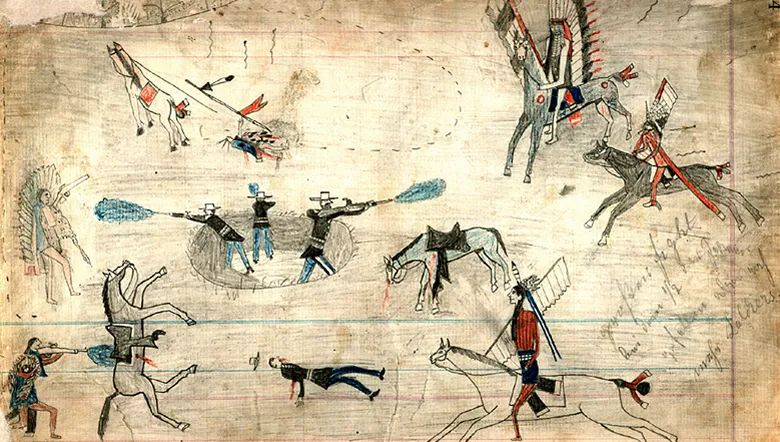


The picture above belongs to a class of narrative illustrations known as "Ledger Drawings". These were created by Native Americans who lived on the Plains of the United States in the late nineteenth and early twentieth centuries. Driven from ancestral homelands and onto reservations, the Native Americans recorded events on pieces of paper taken from ledger books of reservation managers. The illustrations augmented story telling, the vehicle which transmitted oral tradition from generation to generation. Ironically, many Ledger Drawings were created while the Native Americans were imprisoned at Fort Marion, in St. Augustine, Florida.
It is believed this picture (above) represents an 1874 battle that took place between the Kiowa and the United States Army, at Buffalo Wallow in the Red River War.

 Why do we appreciate art? Why do we create it? Does art have extrinsic value, besides the price it can fetch at auction?
Why do we appreciate art? Why do we create it? Does art have extrinsic value, besides the price it can fetch at auction?
 These are not easy questions, and each of us will likely have a different answer. One thing is certain, though: governments throughout history have recognized the power of art, and have sought to control artistic expression. This is so, because art speaks. Often, it speaks for those who have been denied a voice in the public forum.
These are not easy questions, and each of us will likely have a different answer. One thing is certain, though: governments throughout history have recognized the power of art, and have sought to control artistic expression. This is so, because art speaks. Often, it speaks for those who have been denied a voice in the public forum.
 Almost all the art shown on this page represents the experience of people under occupation by a foreign entity.
Almost all the art shown on this page represents the experience of people under occupation by a foreign entity.
 Art may speak with the force of a spear. This is evident in some of the pictures displayed here.
Art may speak with the force of a spear. This is evident in some of the pictures displayed here.

Ledger Art by Cheyenne Chief Howling Wolf

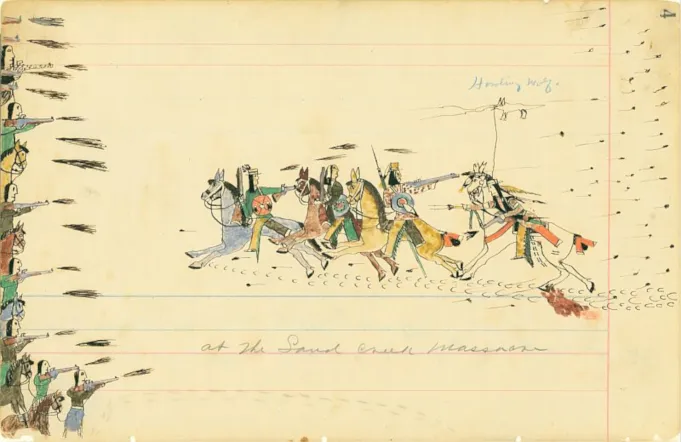

This drawing depicts a massacre of Native Americans that took place at Sand Creek, New Mexico in 1864. According to scholars at the Smithsonian, "Sand Creek was the My Lai of its day, a war crime exposed by soldiers and condemned by the U.S. government". The massacre was remarkable for its brutality, which included mutilations and the slaughter of women and children. It was also remarkable for the great number of witnesses left behind, who testified to what had occurred. One of the witnesses, Chief Howling Wolf, drew the picture displayed above.

 Sometimes art speaks obliquely. In certain cases, oblique messages have a more enduring influence than those delivered sharply.
Sometimes art speaks obliquely. In certain cases, oblique messages have a more enduring influence than those delivered sharply.
Ledger Drawing by Lakota Sioux Chief Black Hawk



This picture features a heyókȟa, "one of the most powerful medicine people of the Lakota" tribe. The heyókȟa is an important figure in Lakota culture. He/she is part of the tribal mythology that connects the past to the present. Many of the remedies that have been traditionally favored by heyókȟa are used today.


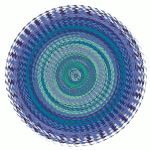


Peru
Pictures of graphic violence are in this section. If these will disturb you, please stop reading now.


Imprisonment of Tupac Amaru I
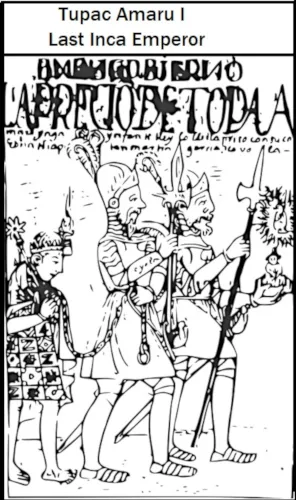

This illustration shows Tupac Amaru I, last Inca Emperor, as prisoner of Spanish soldiers. Before his capture, Tupac had led the remnants of the Inca Empire in rebellion against the Spanish. The picture here was drawn by Felipe Guamán Poma de Ayala (1535-1616) in his book, "Nueva Crónica y Buen Gobierno".

The Execution of Tupac Amaru I


Tupac Amaru I had only been emperor for a short time when he was captured. During his imprisonment, he was subject to intense religious instruction and underwent conversion to Christianity. Once the conversion had taken place, he was decapitated. His head was placed on a spike. The head became an object of veneration (the Inca believed their emperors were immortal and worshiped their mummified remains.), and attracted great crowds.
The Spanish removed Tupac Amaru's head from the spike and buried it.

The Execution of Tupac Amaru II
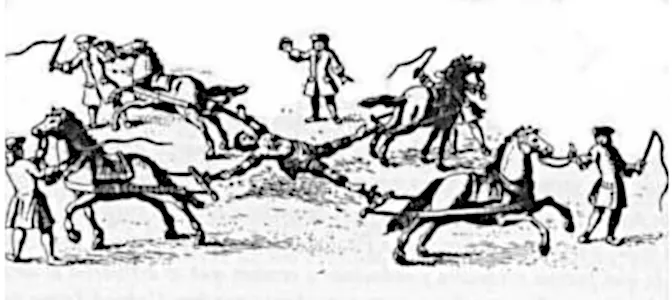

It is said that the man who called himself Tupac Amaru II was a descendant of Tupac Amaru I. As his namesake had done before him, Tupac Amaru II led a rebellion against the Spanish. And, as had transpired with his predecessor, Tupac Amaru II was captured and executed. However, his execution was even more brutal than had been that of his antecedent.
He was sentenced to have his tongue cut out. He was forced to watch the torture and murder of his family. He was also sentenced to have his body torn apart by four horses running in different directions, but this didn't work. So the Spanish untied him from the horses and decapitated him. After Tupac Amaru's death, his body was cut into pieces. These pieces were distributed to different parts of Peru.
The gruesome deaths of Tupac I and Tupac II were meant to dampen the spirit of rebellion, but had the opposite effect. For generations, even to the present, the name Tupac Amaru has been an inspiration for rebellion. The pictures drawn by Guamán Poma de Ayala helped to keep their stories alive.





Vietnam

Evacuation, by Tô Ngọc Vân (1908-1954)
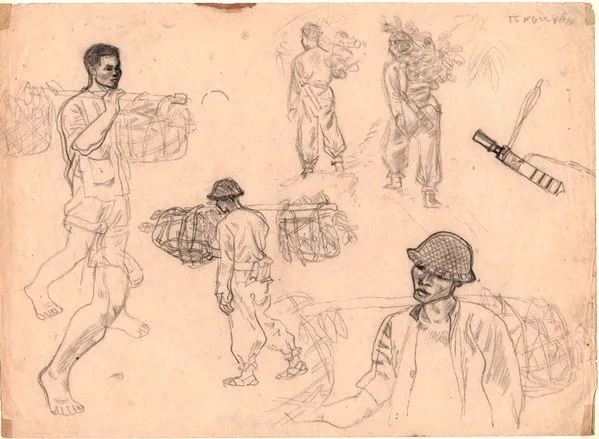

The author of this picture, Tô Ngọc Vân, (1908-1954) was said to have quoted Picasso: “War can be waged through painting.” This was perhaps a way of saying that art speaks powerfully.
Tô Ngọc Vân began his career as a painter under French colonial rule. His early work showed a strong European influence and consisted mostly of idealized landscapes and portraits. After the Viet Minh's August Revolution, Tô Ngọc Vân's work changed. He created posters, and pictures such as the one above, which carried strong political messages.





Australia

Aboriginal Hollow Log Tombs
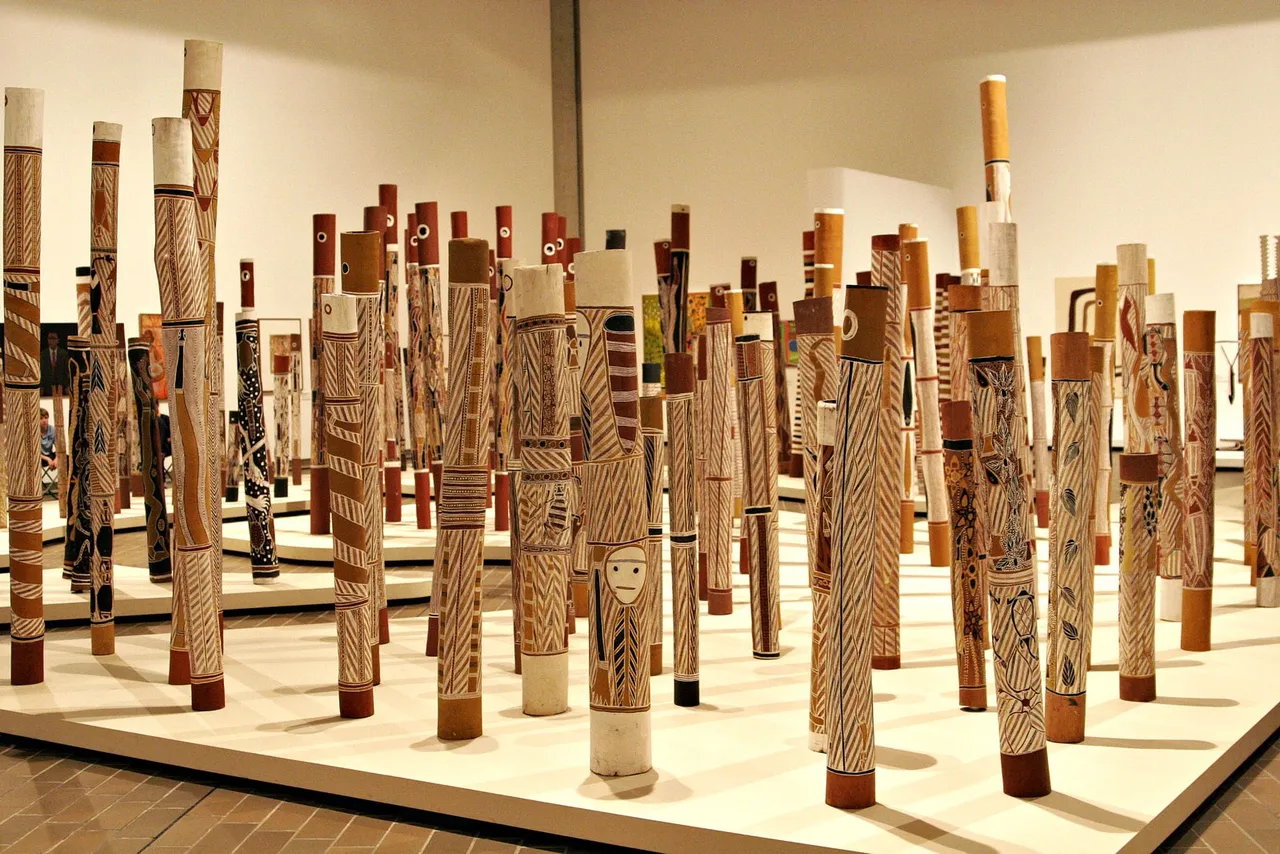
Image credit GFDL v1.2 license: Flagstaffotos
This installation of hollow log coffins is on display at the National Gallery of Australia, in Canberra. The artists who designed the coffins are members of clans whose traditional homes are in Central Arnhem Land, Australia. The Hollow Log Coffin installation represents "all the indigenous people who, since 1788, have lost their lives defending their land". The artists wanted their work to be displayed publicly, so future generations would remember, and honor, the struggles of their people.





Brazil

The Prophet Daniel, by Aleijadinho
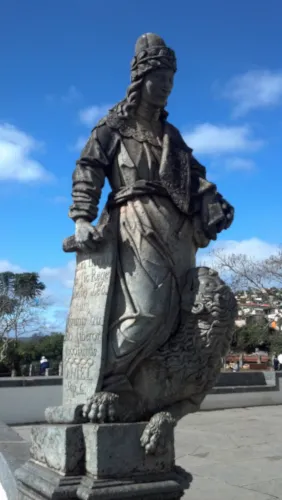
Photo credit: Pgaraujo. Used under CC 4.0 license.
The statue pictured above is one of twelve sculptures created by Antonio Francisco Lisboa at the Sanctuary of Bom Jesus of Matosinhos, in Brazil. Antonio Francisco Lisboa was more popularly known as Aleijadinho (the lame one) because, it is said, he had leprosy.
Aleijadinho's twelve towering statues depict the twelve apostles. While many critics believe these sculptures are posed as ballet dancers, one scholar, Monica Jayne Bowen, from Brigham University, sees more culturally relevant elements. She sees in the graceful poses an emulation of capoeira, a style of fighting with Afro-Brazilian origins. Ms. Bowen explains that the relative positions of the apostles and their gestures are typical of capoeira combatants. She asserts that the statues are "political propaganda" and " a call for liberation". While it was likely not safe for Aleijadinhoto to make such a statement openly, under Portuguese occupation, it would be relatively safe for him to send a subtle message through art.





India

Bharat Mata, by Abanindranath Tagore
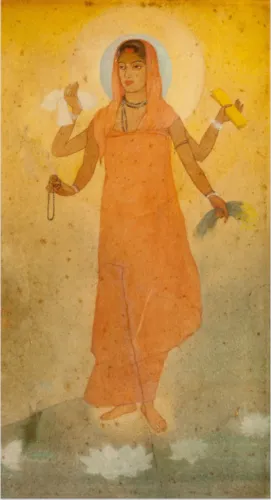

British colonial rule began in India with the Battle of Plassey in 1757. British domination of India lasted for almost two hundred years. Such a long period of colonial rule had a profound effect on Indian culture, and specifically on Indian art. In order to survive and prosper in this environment, many Indian artists (according to the Discover Society,) "... tried to adjust their painting styles to suit British preferences".
However, there always existed in India a nationalist sentiment, a desire for autonomy. By the end of the nineteenth century, this nationalist sentiment gained steam. Burgeoning nationalism was evident in the work of some artists, among them Abanindranath Tagore. His choice of subject in the painting featured above--Bharat Mata, (known as Mother India)--reflects that nationalist sentiment. Not only the choice of subject, but also Tagore's technique was seen as a "rejection of Western realism".





Democratic Republic of the Congo

Raffia Mat
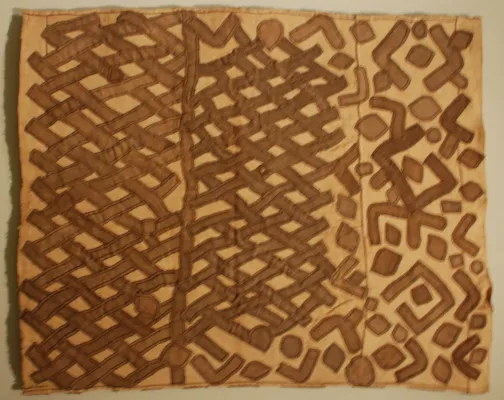
Image: Wikipedia Loves Art participant "Team_Yatta"; CC 2.5 license
The brutality of Belgian colonialism in the Congo was famously immortalized in Joseph Conrad's Heart of Darkness. In the midst of this oppressive regime, "There were artists living at that time...making their art...", according to UCLA scholar, Carlee Forbes.
One way artists responded to their environment was through the design of raffia mats. These mats had been in use since at least the fifteenth century. Textiles have traditionally been important in Congo as a form of currency. They were also displayed by local rulers as symbols of power. Over time, under colonial rule, the design of some raffia mats changed from being purely abstract, to including figures (such as panthers).





Poland

Sheeps in Fog, by Stanisław Witkiewicz


Poland shares borders with powerful neighbors. In the past, this has resulted in the nation's conquest and partition. However, despite these threats to its survival, Poland has always had a core of people who held onto the idea of the nation's identity. One of these was the artist Stanisław Witkiewicz. Witkiewicz advocated for using Polish nationalist themes and Polish naturalist landscape in art. He was drawn to mountain culture, as the scene in "Sheeps in Fog" exemplifies, above.





China

Fisherman, by Wu Zhen
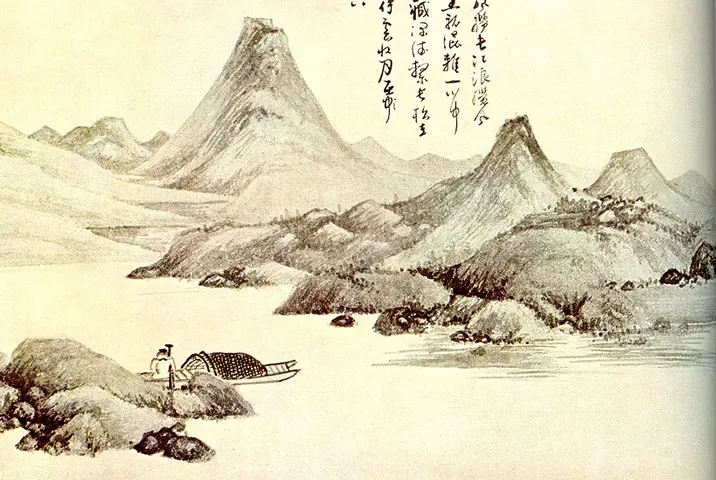

In 1279 AD, Kubla Khan swept across southern China and completed the Mongol conquest of the country. This was the beginning of the Yuan Dynasty, which would last until 1368. The Mongols left no room for dissent. Many elite indigenous Chinese reacted to Mongol oppression by retreating into the country and quietly pursuing scholarly endeavors that emphasized traditional Chinese values. This emphasis included a focus on Confucianism, Taoism and personal character. From this focus grew a body of art that has been characterized as literati art. This was not a new form of art, but it blossomed during the Yuan Dynasty.
At the end of Mongol rule, a legacy of literati art remained. This was, and still is, considered to be a treasure trove of Chinese culture and tradition. Wu Zhen, the artist whose picture is featured here, was one of the most esteemed of the Yuan Dynasty literati.




 Art selections from five continents and from different centuries are presented in this blog. No matter the origin, each piece speaks to us today. The language of art transcends the differences.
Art selections from five continents and from different centuries are presented in this blog. No matter the origin, each piece speaks to us today. The language of art transcends the differences.
I hope you enjoyed my whirlwind tour through art. Thank you for coming along on the journey.


Art Speaks
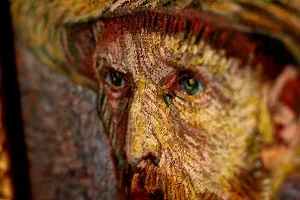



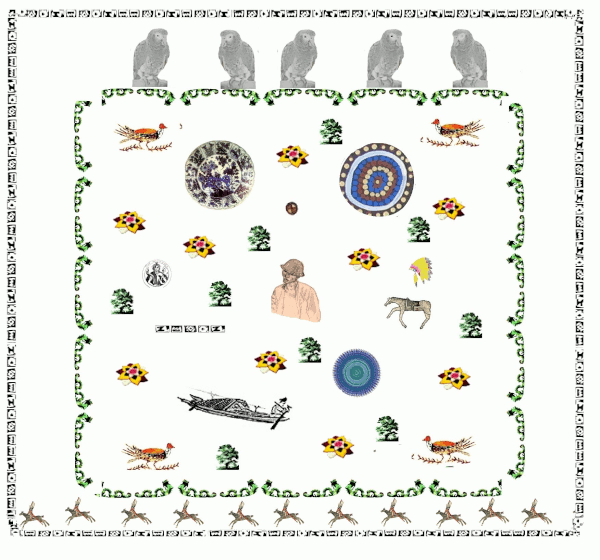



Public Domain Citations for Featured Art in the Blog (Not Otherwise Credited)
End picture by Vincent Van Gogh Pixabay
Accents/GIFs, All in the Public Domain(All Accents Used Have Cultural Significance for the Associated Culture)
- Horse:Horse extracted from Kiowa Ledger Drawing cited above
- Hopi excerpt.jpg:


 from Hopi Tile
from Hopi Tile - Spear Pixabay
- Headdress pixabay
- Blue disc adapted from Pixabay
- Inca border:design excerpted from design excerpted from Imprisonment of Tupac Amaru I
- Inca-Urco: Inca-Urco
- Supplicants extracted from Execution of Tupac Amaru illustration above
- Sun extracted from public domain image
- Dragon Pixabay
- Aboriginal art Pixabay
- Icon bird public domain
- India flower border Pixabay
- Congo Grey parrot Pixabay
- Bartek tree Public domain
- Chinese border peonie plate
- Pallet
Selected Research Sources:
Panhandle Plains: Education Lessons
Smithsonian Magazine: Horrific Sand Creek Masscre Will Be Forgotten No More
Society of Ethnobiology: Heyókȟa Medicine: Uses of Plant and Animals by the Clowns of the Lakota
Britannica: Biography Felipe Guaman Poma de Ayala
ThoughtCo: Biography of Tupac Amaru
Britannica: Biography of Tupac Amaru II
Vietnam The Art of War: Tô Ngọc Vân Biography
Peoples Dispatch: August Revolution in Vietnam Liberation of Hanoi
National Gallery of Australia: Aboriginal Memorial
Scholarship Archive Brigham University: Viewpoint
Britannica: Battle of Plassey
The Cultural Me: Abanindranath Tagore’s Bharat Mata and its Role in Fostering Indian Identity
Museums of India: Bharat Mata (Mother India)
The Conversation: How Conrad's Imperial Horror Story Heart of Darkness Resonates with Our Global Times
UNC Global: Art History Graduate Student Challenges Popular Narratives about Colonial Congo
Britannica: Partitions of Poland
China Highlights: Travel Guide the Yuan Dynasty
Culture Place: Artist Stanislaw Wtkiewicz
Smithsonian: National Museum of African Art
Africa Direct: Raffia Textiles//Kuba Textiles
Indiana University: Transmitting Sacred Knowledge: Aspects of Historical and Contemporary of Oglala Lakota Belief and Ritual
The Cultural Trip: North American Mexico Articles
The Localist: Muralism in Mexico
Texas State Historical Association: Buffalo Wallow Fight
Live Mint: The Origins of Bharat Mata
University of Agriculture in Krakow: Preliminary Results of the Monumental Tree Monitoring Based on Terrestrial Laser Scanning: A Case Study of the Oak Bartek in Zagnansk (Poland)
Discover Society.org: Visual Arts and Imperialism in India in the Eighteenth Century A Colonial Society in the Making
University of California, Irvine: "The Clown’s Way" by Barbara Tedlock
Austin Peay State University: Execution of Tupac Amaru I, Last Inca Emperor
Jamesqjacobs.net: Tupac Amaru, The Life, Times, and Execution of the Last Inca
Smithsonian: The Fascinating Afterlife of Peru’s Mummies
Telesur: The Killing of Tupac Amaru II: the Death Knell of Spanish Rule
Liberation School: Tupac Amaru II: Condor of Fire
China Online Museum: Literati Painting
